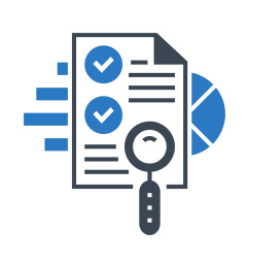BI / Data Analytics
Strategy

Establishing specific business goals and objectives is one of the key steps in building an Analytics Strategy. This provides clarity for departments to align with the overall business objectives. Organizations must consider both short-term and long-term goals when building the Data Analytics strategy. Executives should build an analytics driven decision making culture with in the organization. The strategy should include developing a roadmap that provide clarity around business goals. This plan should include the budget for training and building the right skill set. The strategy should be flexible to allow departments to take advantage of data in the current format while working towards long-term standardized data architecture.
Technology & Expertise

Data Analytics technologies are emerging rapidly, on a daily basis. This is expected to continue into the next decade. Finding qualified and skilled professionals is a challenge for many organizations.
Data Storage

Data in an organization typically comes from various different sources and in various different formats; structured and unstructured. Storing such data securely and making it available to business groups is an essential consideration. Although Cloud technologies have reduced the infrastructure costs, ongoing operating and maintenance costs can add up as the business grows and volume of data increases. The data must be encrypted at rest, access controls and polices must be established. Data retention policies and procedures must be established to purge the data to meet industry specific compliance standards.
Mapping Data

A mid-sized organization may have over 200 different applications to manage their business. This means the data is stored in multiple sources and in different formats. To be able to extract meaningful business insights, mapping data across various sources becomes essential.
Data Quality

Complete, consistent, accurate and reliable data is important as business decisions and operations depend on it. As data storage systems have evolved from relational databases to big data platforms, data quality has gotten more emphasis. With the increased adoption of Cloud and Big Data technologies, data quality issues have become more widespread. Manual errors, mergers\acquisitions, migrations from legacy systems are some of the sources of inaccurate data. It is important to measure the quality of data sets and establish a benchmark. This involves defining the quality metrics. This involves identifying the source of data quality issues. Fixing the data quality issues at the source is ideal but may not be an options all the time. Quality issues can also be addressed at the time of importing data(ETLs) from source systems. Establish a data quality and governance standards for the organization is essential.
Data Security & Privacy

Establishing data governance standards is one of the key components of securing the data. Encryption and Access Control are standard considerations for securing the the data. Managing the encryption keys is another component of encryption which needs careful evaluation and adoption of key management tools. Data security threats are continuously evolving. to build analytics solution. We have experience with industry leading analytics platforms as well as some of the emerging platforms. We can help reduce the amount of time and energy that businesses need to invest in analytics solution.
